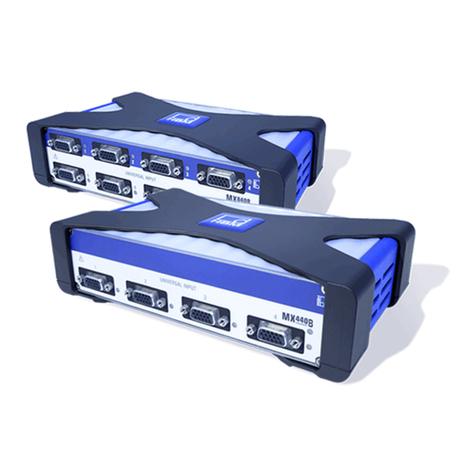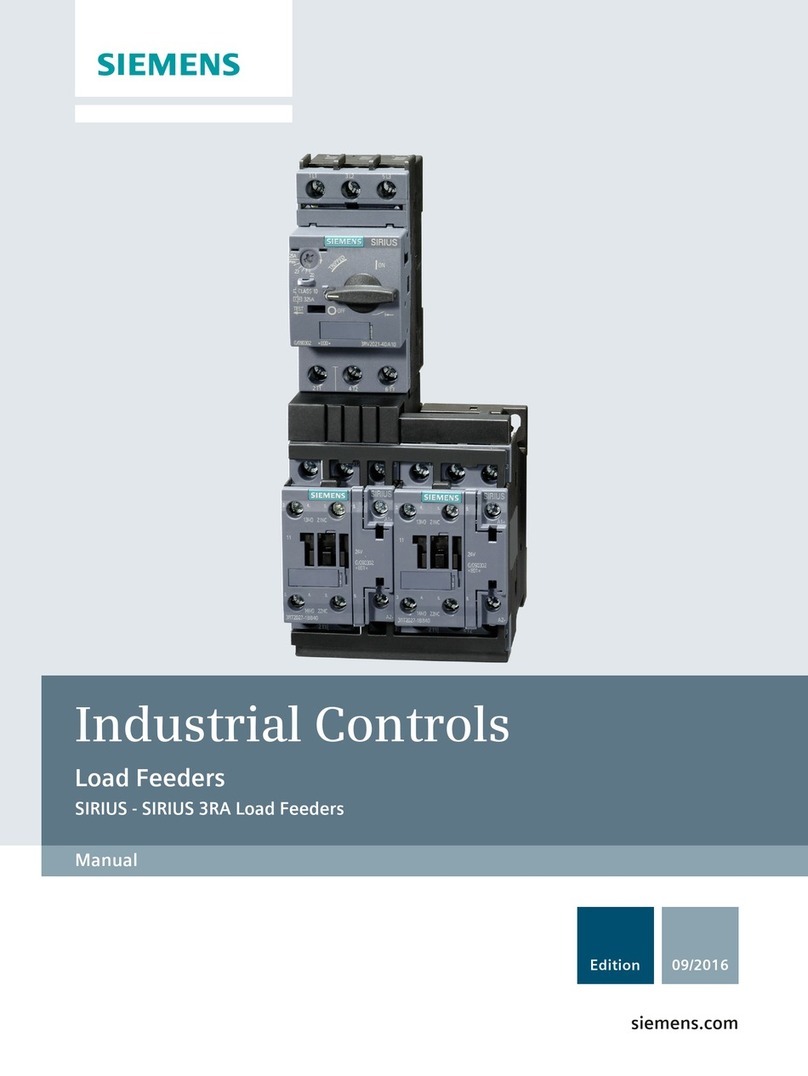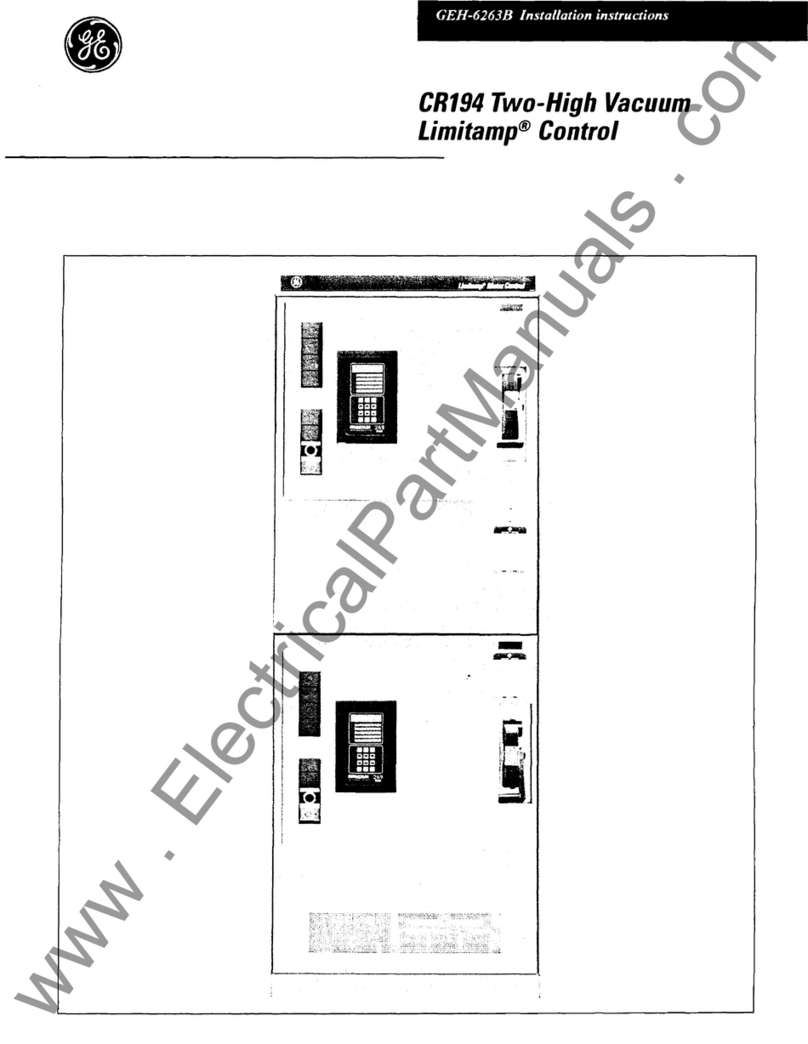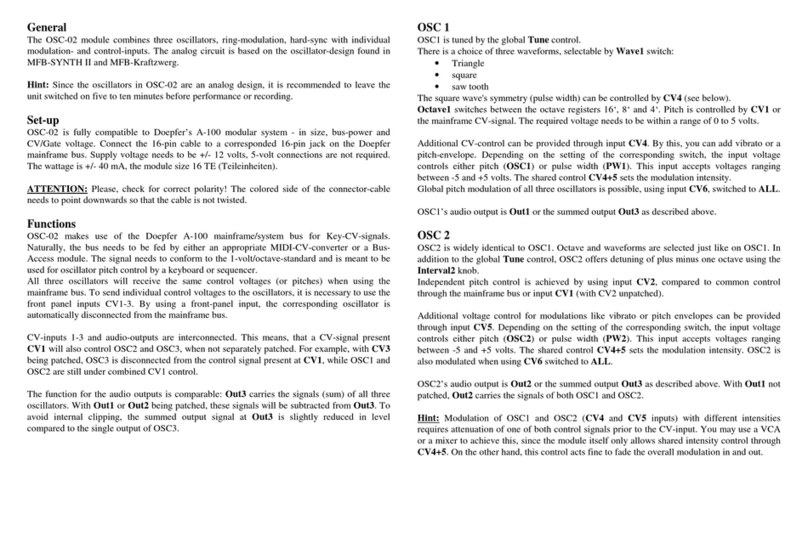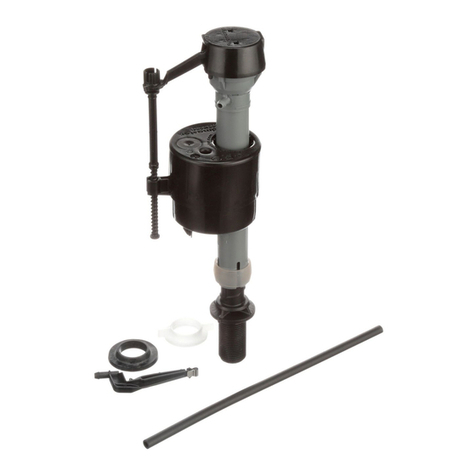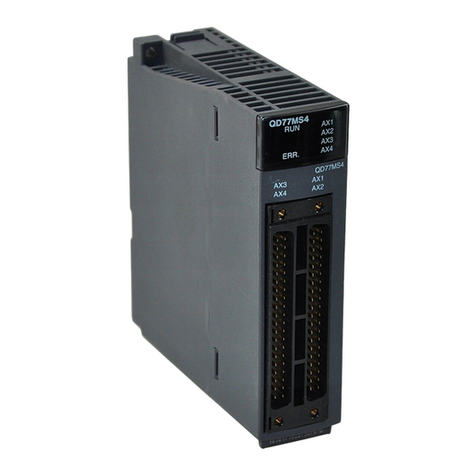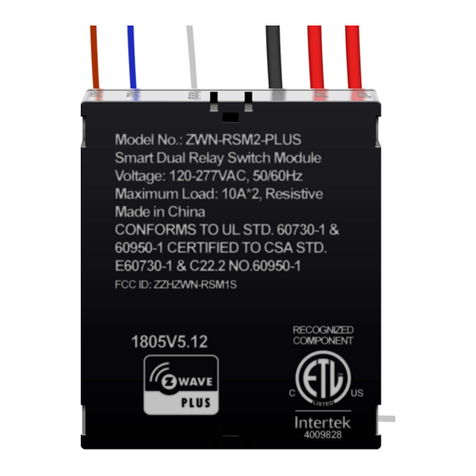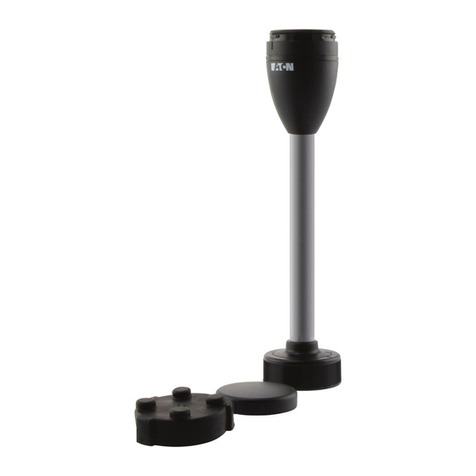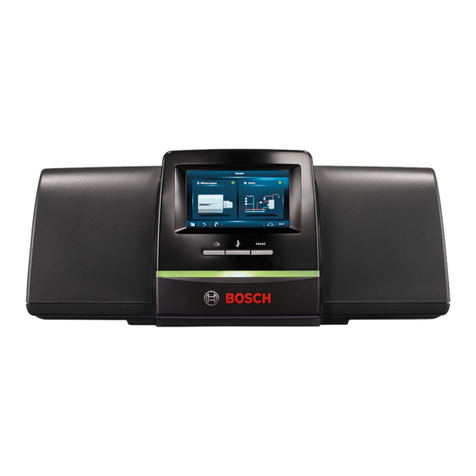MeiGLnk SLM756P User manual

2
SLM756P UserManual
Released Date:2019/3
File name:SLM756P UserManual
Version Number:V1.00
Company:MeiG Smart Technology Co., Ltd
MeiG Smart Technology Co., Ltd

3
IMPORTANT NOTICE
COPYRIGHT NOTICE
Copyright © MeiG Smart Technology Co., Ltd. All rights reserved.
All contents of this manual are exclusively owned by MeiG Smart Technology Co., Ltd(MeiG
Smart for short), which is under the protection of Chineselawsandcopyrightlaws in
international conventions. Anyone shall not copy, spread, distribute, modify or use in other
ways with its contents without the written authorization of MeiG Smart. Those
whoviolatedwillbe investigated by corresponding legal liability in accordance with the law.
NO GUARANTEE
MeiG Smart makes no representation or warranty, either express or implied, for any content
in this document, and will not be liable for any specific merchantability and applicable or any
indirect,particular and collateral damage.
CONFIDENTIALITY
All information contained here (including any attachments) is confidential. The recipient
acknowledges the confidentiality of this document, and except for the specific purpose, this
document shall not be disclosed to any third party.
DISCLAIMER
MeiG Smart will not take any responsibility for any property and health damage caused by
the abnormal operation of customers. Please develop the product according to the technical
specification and designing reference guide which defined in the product manual. MeiG
Smart have the right to modify the document according to technical requirement with no
announcement to the customer.

4
SLM756P_Hardware Design Guide_V1.00

5
Foreword
Thank you for using the SLM756P module from Meg Smart. This product can provide data
communication services. Please read the user manual carefully before use, you will
appreciate its perfect function and simple operation method.
The company does not assume responsibility for property damage or personal injury caused
by improper operation of the user. Users are requested to develop the corresponding
products according to the technical specifications and reference designs in the manual. Also
pay attention to the general safety issues that mobile products should focus on.
Before the announcement, the company has the right to modify the contents of this manual
according to the needs of technological development.

6
1. Introduction................................................................................................................................................................ 9
2. Module Overview...................................................................................................................................................... 9
2.1 Summary of features........................................................................................................................................ 9
2.2 Block diagram................................................................................................................................................ 12
3. Module Encapsulation ............................................................................................................................................. 13
3.1 Pin distribution diagram................................................................................................................................. 13
3.2 Pin definitions................................................................................................................................................ 14
3.3 Mechanical Dimensions................................................................................................................................... 1
4. Interface Application.................................................................................................................................................. 4
4.1 Power Supply................................................................................................................................................... 4
4.1.1 Power Pin.............................................................................................................................................. 5
4.2 Power on and off............................................................................................................................................. 6
4.2.1 Module Boot......................................................................................................................................... 6
4.2.2 Module Shutdown................................................................................................................................. 7
4.2.3 Module Reset........................................................................................................................................ 7
4.3 VCOIN Power.................................................................................................................................................. 8
4.4 Power Output................................................................................................................................................... 9
4.5 Serial Port ...................................................................................................................................................... 10
4.6 MIPI Interface................................................................................................................................................ 12
4.6.1 LCD Interface ..................................................................................................................................... 12
4.6.2 MIFI camera Interface ........................................................................................................................ 14
4.7 Resistive Touch Interface............................................................................................................................... 17
4.8 CapacitiveTouch Interface............................................................................................................................. 17
4.9 Audio Interface .............................................................................................................................................. 18
4.9.1 Receiver Interface Circuit.................................................................................................................. 19
4.9.1 Microphone receiving Circuit............................................................................................................. 19
4.9.2 Headphone Interface Circuit............................................................................................................... 19
4.9.4 Speaker Interface Circuit ................................................................................................................... 20
4.9.5 I2S Interface....................................................................................................................................... 21
4.10 USB Interface .............................................................................................................................................. 21
4.10.1 USB OTG ......................................................................................................................................... 22
4.11 Charging Interface........................................................................................................................................ 23
4.11.1 Charging Detection ........................................................................................................................... 23
4.11.2 Charge Control................................................................................................................................. 23
4.11.3 BAT _THERM................................................................................................................................. 23
4.12 UIM Card Interface...................................................................................................................................... 24
4.13 SD Card Interface ........................................................................................................................................ 24
4.14 I2C Bus Interface........................................................................................................................................ 25
4.15 Analog to Digital Converter (ADC)............................................................................................................ 25
4.16 PWM............................................................................................................................................................ 25
4.17 Motor ........................................................................................................................................................... 26
4.18 Antenna Interface........................................................................................................................................ 26
4.18.1 Main Antenna .................................................................................................................................. 26
4.18.2 DRX Antenna .................................................................................................................................. 27
4.18.3 GPS Antenna.................................................................................................................................... 28
4.18.4 WiFi/BT antenna.............................................................................................................................. 29
5. PCB Layout ............................................................................................................................................................. 30
5.1. Module PIN distribution............................................................................................................................... 30
5.2. PCB layout principles................................................................................................................................... 30
5.2.1.Antenna.............................................................................................................................................. 31
5.2.2 Power supply....................................................................................................................................... 31
5.2.3. SIM card ............................................................................................................................................ 31
5.2.4. MIPI................................................................................................................................................... 32
5.2.5. USB.................................................................................................................................................... 32
5.2.6.Audio .................................................................................................................................................. 32
5.2.7. Other.................................................................................................................................................. 33

7
6. Electrical & Reliability............................................................................................................................................ 33
6.1 Absolute Maximum........................................................................................................................................ 33
6.2 Working Temperature..................................................................................................................................... 33
6.3 Working Voltage............................................................................................................................................. 34
6.4 Digital Interface Features............................................................................................................................... 34
6.5 SIM_VDD Characteristics............................................................................................................................. 34
6.6 PWRKEY Feature.......................................................................................................................................... 34
6.7 VCOIN Feature.............................................................................................................................................. 35
6.8 Current Consumption (VBAT = 3.8V)........................................................................................................... 35
6.9 Electrostatic Protection.................................................................................................................................. 36
6.10 Module Operating Frequency Band............................................................................................................. 36
6.11 RF Characteristics........................................................................................................................................ 37
6.12 Module Conduction Receiving Sensitivity.................................................................................................. 37
6.13 WIFI Main RF Performance........................................................................................................................ 39
6.14 BT Main RF Prformance ............................................................................................................................. 40
6.15 GNSS Main RF Performance....................................................................................................................... 40
7. Production................................................................................................................................................................ 41
7.1. Top And Bottom Views Of The Module....................................................................................................... 41
7.2. Recommended Soldering Furnace Temperature Curve ................................................................................ 41
7.3. Humidity Sensitivity (MSL) ......................................................................................................................... 41
7.4. Baking Requirements.................................................................................................................................... 42
8. Support Peripheral Device List................................................................................................................................ 42
9. Appendix.................................................................................................................................................................. 44
9.1. Related Documents....................................................................................................................................... 44
9.2. Terms And Explanations............................................................................................................................... 44
9.3. Multiplexing function................................................................................................................................... 46
9.4. Safety Warning.............................................................................................................................................. 47
10. OEM/Integrators Installation Manual.................................................................................................................... 48
10.1. List of applicable FCC rules....................................................................................................................... 48
10.2. Summarize the specific operational use conditions.................................................................................... 48
10.3. Limited module procedures ........................................................................................................................ 48
10.4. Trace antenna designs................................................................................................................................. 48
10.5. RF exposure considerations........................................................................................................................ 48
10.6.Antennas ..................................................................................................................................................... 48
10.7. Label and compliance information ............................................................................................................. 49
10.8. Information on test modes and additional testing requirements ................................................................. 49
10.9. Additional testing, Part 15 Subpart B disclaimer........................................................................................ 49

8
Version History
Date
Version
Change description
Author
2019-6
1.00
First edition
Zheng Lei

9
1. Introduction
This document describes the hardware application interface of the module, including the circuit
connections and RF interfaces of the relevant applications. It can help users quickly understand the
module's interface definition, electrical performance and structural size details. Combined with this
and other application documents, users can quickly use modules to design mobile communication
applications.
2. Module Overview
The SLM756P module uses the Qualcomm MSM8909 platform solution, the MSM8909 processor
is manufactured in a 28nm LP CMOS process, the quad core clocked at 1.1GHz, and the memory
supports 8GB+1GB (compatible with 16GB+2GB) LPDDR3. The chip can support WCDMA,
FDD-LTE and other standards, and is a highly integrated product.
The working frequency bands that the SLM756P module can support are:
FDD-LTE: B2/4/5/7/12/13/17
WCDMA: B2/4/5
The physical interface of the module is a 210-pin pad that provides the following hardware interfaces:
Two serial ports, including one four-wire serial port and one two-wire serial port.
LCM (MIPI interface).
Two-way Camera interface (MIPI data).
A high-speed USB interface.
Three audio input interfaces.
Three-channel audio output interface.
Two-way UIM card interface.
GPIO interface.
Four sets of I2C interfaces.
A set of SPI interfaces.
A TF card interface.
Support GNSS, WiFi, Bluetooth4.1, FM function.
2.1 Summary of features
Table 2.1:SLM756P features
Product characteristics
Description
Plateform
Qualcomm MSM8909
CPU
Quad-core A7 (32bit) 1.1GHz

10
GPU
A304 409.6MHz
System memory
8GB eMMC + 1GB LPDDR3/16GB eMMC + 2GB LPDDR3
OS
Android 5.1/ Android 7.1
Size
44.0x39.0x3.0mm,LCC+LGA130pin
SLM756P
Network
band
-NA
(North
America)
FDD-LTE: B2/4/5/7/12/13/17
WCDMA: B2/4/5
Wi-Fi
IEEE 802.11a/b/g/n 2.4G&5G
Bluetooth
BT4.1
FM
Support
GNSS
GPS/Beidou/Glonass
DAT
A
TDD-LTE
Cat4 TDD-LTE 117/30Mbps
FDD-LTE
Cat4 FDD-LTE 150/50Mbps
DC-HSPA+
42/11.2Mbps
TD-HSPA
2.8/2.3Mbps
SIM
DSDS (Dual Sim-card Dual Stanby)
3.0/1.8V
Support SIM hot plug
L/W/G+G with CSFB to W/G
L/TDS/G+G with CSFB
Don’t support dual CDMA sim-card
Display
Matrix:
HD(720p):1280*720@60fps
LCM Size: User defined
Interface: MIPI DSI 4-lane
Camera
(Front and rear)
Interface: main: MIPI CSI0 2-lanes; front: MIPI CSI1 1-lanes
Camera Pixel: Max: FRONT5M/REAR8M
Video decode
1080p 30 fps: HEVC/H264/ MP4/DivX/VP8
WVGA 30 fps:H.263
Video encode
720p 30 fps:H264
WVGA 30 fps:VP8/MP4
Input Device
Key(Power on/off, Volume+, Volume-)
Capacitive TP
Reset
Support HW reset
Application interface
Interface
Main function description
VBAT
Module power input, 3.3V ~ 4.2V, nominal
value 3.8V
SDIO *1
TF Card,Support32GB max
USB
SupportOTG
FORCE_USB_BOOT(Pull-up forced USB boot
for emergency download)
UART*2
A set of 4-wire uart, a set of 2-wire uart

11
I2C*4
For sensors/TP/others
SPI*1
Master only
ADC*2
Support
Charging
function
Built-in 5V/1.44A, support external charging
chip
Motor
Support
GPIO
17
VCOIN
Real-time clock backup battery
RF PIN
Multimode LTE main antenna
Multimode LTE diversity antenna
The GPS antenna
2.4 G WiFi/BT antenna
Audio
2-way single-ended MIC (ECM&MEMS ),1
way headphone MIC
1 way speakerphone (with amplifier)
1 way earpiece
1 channel stereo headset

12
2.2 Block diagram
The following figure lists the main functional parts of the module.
MSM8909 Baseband
PM8909 Power management
Antenna interface
MIPI interface
Storage EMCP
AUDIO interface
Serial port, SD card interface, SIM card interface, I2C interface, etc.

13
3. Module Encapsulation
3.1 Pin distribution diagram
Figure 3.1:module pin diagram (top view)

MeiG hardware design guide
14
3.2 Pin definitions
Table 3.1:Pin description
Pin Name
Pin number
I/O
Description
Comment
The power supply
VBAT
49、50
I
The module provides four
VBAT power pin pins. The
SLM756P operates from a
single supply with a voltage
range from 3.3V to 4.2V for
VBAT.
Externally,
the
capacitor
and Zener
diode need
to be
increased
for surge
protection.
VBUS
51
I
Charging input power.
VCOIN
68
I/O
The external backup battery
provides power to the system
real-time clock when the
system power supply VBAT is
not in place. The backup
battery is charged when
VBAT is in place.
Connect the
3V button
battery or
large
capacitor to
the VCOIN
pin.
VREG_L2_1P2
6
O
1.2V power output for CAM
DVDD power supply
200mA
VREG_L6_1P8
7
O
1.8V power output for LCM,
Camera and other low current
supplies.
200mA
VREG_L17_2P85
8
O
2.85V power output for
Camera power supply.
420mA
VREG_L11_SDC
94
O
TF card power supply pin
600mA
VREG_L8_2P9
9
O
2.9V power output for Camera
power supply.
300mA
VREG_L14_UIM1
107
O
UIM1 power supply pin
55mA
VREG_L15_UIM2
103
O
UIM2 power supply pin
55mA
GND
3、15、22、25、
28、47、48、53、
55、56、60、62、
64、66、85、87、
93、102、111、
115、118
Ground
Display interface (MIPI)
MIPI_DSI0_CLK_N
119
I/O
MIPI_LCD clock
MIPI_DSI0_CLK_P
120
I/O
MIPI_DSI0_LANE0_N
121
I/O
MIPI_LCD data
MIPI_DSI0_LANE0_P
122
I/O

MeiG hardware design guide
15
MIPI_DSI0_LANE1_N
123
I/O
MIPI_DSI0_LANE1_P
124
I/O
MIPI_DSI0_LANE2_N
125
I/O
MIPI_DSI0_LANE2_P
126
I/O
MIPI_DSI0_LANE3_N
1
I/O
MIPI_DSI0_LANE3_P
2
I/O
LCD_RST_N
117
O
LCD reset
LCD_TE0
5
I
LCD frame sync signal
UART
UART_TX
80
O
UART1 Data sent
UART_RX
79
I
UART1 Data reception
UART_CTS
78
I
UART1 Clear to send
UART_RTS
77
O
UART1 Request to send
UART_MSM_TX
82
O
UART2 Data sent
debug
UART_MSM_RX
81
I
UART2 Data reception
debug
UIM Card Interface
UIM1_DET
88
I
UIM1 detect
UIM1_RESET
108
O
UIM1 reset
UIM1_CLK
110
O
UIM1 clock
UIM1_DATA
109
I/O
UIM1 data
UIM2_DET
84
I
UIM2 detect
UIM2_RESET
104
O
UIM2 reset
UIM2_CLK
106
O
UIM2 clock
UIM2_DATA
105
I/O
UIM2 data
Front Camera
MIPI_CSI1_LANE0_N
26
I/O
Front Camera MIPI data
MIPI_CSI1_LANE0_P
27
I/O
Front Camera MIPI data
MIPI_CSI1_CLK_N
29
I/O
Front Camera MIPI clock
MIPI_CSI1_CLK_P
30
I/O
CAM1_MCLK
31
I/O
Front Camera main clock
CAM1_RST_N
32
I/O
Front Camera reset
CAM1_PWDN
33
I/O
Front Camera dormancy
Rear Camera
MIPI_CSI0_LANE0_N
16
I/O
Rear Camera MIP Idata
MIPI_CSI0_LANE0_P
17
I/O
Rear Camera MIPI data
MIPI_CSI0_LANE1_N
18
I/O
Rear Camera MIPI data
MIPI_CSI0_LANE1_P
19
I/O
Rear Camera MIPI data
MIPI_CSI0_CLK_N
20
I/O
Rear Camera MIPI clock
MIPI_CSI0_CLK_P
21
I/O
Rear Camera MIPI clock
CAM0_MCLK
14
I/O
Rear Camera main clock
CAM0_RST_N
12
I/O
Rear Camera reset
CAM0_PWDN
13
I/O
Rear Camera dormancy
Audio Interface
GND_MIC
34
MIC reference ground
MIC_IN1_P
35
I
Main MIC
MIC_IN2_P
36
I
Headphone MIC
MIC_IN3_P
37
I
Noise MIC
CDC_HPH_R
38
O
Headphone right channel

MeiG hardware design guide
16
CDC_HPH_L
40
O
Headphone left channel
CDC_HS_DET
45
I
Headphone plug detection
CDC_HPH_REF
39
I
Headphone reference ground
CDC_EAR_P
41
O
Earpiece output positive
CDC_EAR_M
42
O
Earpiece output negative
SPKR_DRV_P
43
O
Amplifier (0.85W) output
positive
Class_D
SPKR_DRV_M
44
O
Amplifier (0.85W) output
negative
Class_D
SD Card Interface
SDC2_SDCARD_DET
95
I/O
SD card insertion detection
SDC2_SDCARD_CMD
96
I/O
SD CMD signal
SDC2_SDCARD_CLK
97
I/O
SD clock signal
SDC2_SDCARD_D0
98
I/O
SD data signal
SDC2_SDCARD_D1
99
I/O
SDC2_SDCARD_D2
100
I/O
SDC2_SDCARD_D3
101
I/O
I2C
CAM_I2C_SDA
23
I/O
I2C signal, dedicated to CAM
Up to the L6
CAM_I2C_SCL
24
I/O
I2C signal, dedicated to CAM
SENSOR_I2C_SDA
59
I/O
I2C signal, default SENSOR
SENSOR_I2C_SCL
58
I/O
I2C signal, default SENSOR
TP_I2C_SDA
72
I/O
I2C signal, default TP
TP_I2C_SCL
71
I/O
I2C signal, default TP
TP
TP_INT_N
73
I
TP interrupt signal
TP_RST_N
74
O
TP reset signal
USB
USB_DM
112
I/O
USB DM
USB_DP
113
I/O
USB DP
USB_ID
114
I
USB ID
Antenna interface
RF_MAIN
86
I/O
The main antenna
RF_WIFI/BT
54
I/O
WIFI/BT antenna
RF_DIV
65
I
Diversity antenna
RF_GPS
61
I
GPS antenna
GPIO and default function
GPIO0
92
I/O
Generic GPIO, without default
configuration
GPIO1
91
I/O
Generic GPIO, without default
configuration
GPIO2
90
I/O
Generic GPIO, without default
configuration
GPIO3
89
I/O
Generic GPIO, without default

MeiG hardware design guide
17
configuration
GPIO8_SPI1_MOSI
116
O
SPI interface
GPIO9_SPI1_MISO
10
I
SPI interface
GPIO10_SPI1_CS
11
O
SPI interface
GPIO11_SPI1_CLK
83
O
SPI interface
GPIO14
76
I/O
Generic GPIO, without default
configuration
GPIO15
75
I/O
Generic GPIO, without default
configuration
GPIO16
70
I/O
Generic GPIO, without default
configuration
GPIO17
69
I/O
Generic GPIO, without default
configuration
GPIO36
127
I/O
Generic GPIO, without default
configuration
GPIO90
128
I/O
Generic GPIO, without default
configuration
GPIO95
130
I/O
Generic GPIO, without default
configuration
GPIO98
129
I/O
Generic GPIO, without default
configuration
Other functional pin
KYPD_PWR_N
52
I
Powerkey
PM_RESIN_N
57
I
Pull down to achieve reset
BAT_THERM
46
I
Battery temperature detection
(default battery terminal NTC
resistance is 10K)
PM8909_MPP4
67
I
Analog voltage input for use as
an ADC input
PM8909_MPP2
4
O
Analog voltage output for use
as a PWM output
RF_FM
63
I
FM antenna signal
Table 3.2:Pin Characteristics
Pin#
Pin name
GPIO Interrupt
Pad
characteristics
Functional description
1
MIPI_DSI0_LANE3_N
AI, AO
MIPI display serial interface 0 lane 3 –negative
2
MIPI_DSI0_LANE3_P
AI, AO
MIPI display serial interface 0 lane 3 –positive
3
GND
GND
GND
4
PM8909_MPP2
MPP2**
AO-Z; DO
Configurable MPP; used for PWM
5
LCD_TE0
GPIO24
B-PD:nppukp
Configurable I/O,CCI_TIMER0, GP_CLK0
6
VREG_L2_1P2
OUPUT
PMU Supply 1.2V
7
VREG_L6_1P8
OUPUT
PMU Supply 1.8V
8
VREG_L17_2P85
OUPUT
PMU Supply 2.85V
9
VREG_L8_2P9
OUPUT
PMU Supply 2.9V
10
GPIO9_SPI_MISO
GPIO9
B-PD:nppukp
Configurable I/O SPI

MeiG hardware design guide
18
11
GPIO10_SPI_CS
GPIO10
B-PD:nppukp
Configurable I/O SPI or I2C
12
CAM0_RST_N
GPIO35*
DO;B-PD:nppukp
Rear camera reset; Configurable I/O
13
CAM0_PWDN
GPIO34*
DO;B-PD:nppukp
Rear camera pwdn;Configurable I/O
14
CAM0_MCLK
GPIO26
DO;B-PD:nppukp
Rear camera clock; Configurable I/O
15
GND
GND
GND
16
MIPI_CSI0_LANE0_N
AI, AO
MIPI camera serial interface 0 lane 0 - negative
17
MIPI_CSI0_LANE0_P
AI, AO
MIPI camera serial interface 0 lane 0 –positive
18
MIPI_CSI0_LANE1_N
AI, AO
MIPI camera serial interface 0 lane 1 –
negative
19
MIPI_CSI0_LANE1_P
AI, AO
MIPI camera serial interface 0 lane 1 –
positive
20
MIPI_CSI0_CLK_N
AI
MIPI camera serial interface 0 CLK –negative
21
MIPI_CSI0_CLK_P
AI
MIPI camera serial interface 0 CLK –positive
22
GND
GND
GND
23
CAM_I2C_SDA
GPIO29
B-PD:nppukp
Camera I2C_SDA,can’t be used for other
24
CAM_I2C_SCL
GPIO30
B-PD:nppukp
Camera I2C_SCL,can’t be used for other
25
GND
GND
GND
26
MIPI_CSI1_LANE0_N
AI, AO
MIPI camera serial interface 1 lane 0–negative
27
MIPI_CSI1_LANE0_P
AI, AO
MIPI camera serial interface 1 lane 0 –
positive
28
GND
GND
GND
29
MIPI_CSI1_CLK_N
AI
MIPI camera serial interface 1 clock –negative
30
MIPI_CSI1_CLK_P
AI
MIPI camera serial interface 1 clock –positive
31
CAM1_MCLK
GPIO27
DO;B-PD:nppukp
Camera master clock 1 Configurable I/O
32
CAM1_RST_N
GPIO28*
DO;B-PD:nppukp
Front camera reset Configurable I/O
33
CAM1_PWDN
GPIO33
DI;B-PD:nppukp
Front camera pwdn Configurable I/O
34
GND_MIC
GND
MIC GND
35
MIC_IN1_P
AI
Microphone 1 input, single-ended
36
MIC_IN2_P
AI
Earphone Microphone input, single-ended
37
MIC_IN3_P
AI
Microphone 3 input, single-ended
38
CDC_HPH_R
AO
Earphone right output
39
CDC_HPH_REF
AI
Earphone driver amplifier ground reference
40
CDC_HPH_L
AO
Earphone left output
41
CDC_EAR_P
AO
Earpiece amplifier output, differential plus
42
CDC_EAR_M
AO
Earpiece amplifier output, differential minus
43
SPKR_OUT_P
AO
Speaker(0.85w / 4.2V)driver output, plus
44
SPKR_OUT_M
AO
Speaker(0.85w / 4.2V)driver output, minus
45
CDC_HS_DET
DI
Headset detection
46
BAT_THERM
DI
Battery therm monitor
47
GND
GND
GND

MeiG hardware design guide
19
48
GND
GND
GND
49
VBAT
PI,PO
Battery
50
VBAT
PI,PO
Battery
51
VBUS
PI
USB VBUS Voltage
52
KYPD_PWR_N
DI
Power on key
53
GND
GND
GND
54
RF_WIFI/BT
AI,AO
RF signal
55
GND
GND
GND
56
GND
GND
GND
57
PM_RESIN_N
DI
PMIC reset
58
GPIO7_I2C_SCL
GPIO7
DO;B-PD:nppukp
Configurable I/O I2C or GPIO
59
GPIO6_I2C_SDA
GPIO6
DO;B-PD:nppukp
Configurable I/O I2C or GPIO
60
GND
GND
GND
61
RF_GPS
AI
RF signal-GPS ANT
62
GND
GND
GND
63
RF_FM
AI
RF signal-FM ANT
64
GND
GND
GND
65
RF_DIV
AI
RF signal-DIV ANT
66
GND
GND
GND
67
PM8909_MPP4
MPP4**
AO-Z;DI
Configurable MPP; used for ADC IN
68
VCOIN
PI
VCOIN
69
GPIO17
GPIO17
B-PD:nppukp
Configurable I/O,
70
GPIO16
GPIO16
B-PD:nppukp
Configurable I/O,
71
TP_I2C_SCL
GPIO19
B;B-PD:nppukp
Configurable I/O CTP I2C
72
TP_I2C_SDA
GPIO18
B;B-PD:nppukp
Configurable I/O CTP I2C
73
TP_INT_N
GPIO13*
DI;B-PD:nppukp
Configurable I/O Touchscreen interrupt
74
TP_RST_N
GPIO12*
DI;B-PD:nppukp
Configurable I/O Touchscreen reset
75
SMB_I2C_SCL
GPIO15
B;B-PD:nppukp
Configurable I/O SMB I2C
76
SMB_I2C_SDA
GPIO14
B;B-PD:nppukp
Configurable I/O SMB I2C
77
UART1_RTS
GPIO112*
B;B-PD:nppukp
Configurable I/O UARTor I2C SCL
78
UART1_CTS
GPIO111*
B-PD:nppukp
Configurable I/O UARTor I2C SDA
79
UART1_RX
GPIO21*
B-PD:nppukp
Configurable I/O UART
80
UART1_TX
GPIO20*
B-PD:nppukp
Configurable I/O UART
81
UART2_MSM_RX
GPIO5*
B;B-PD:nppukp
Configurable I/O UART for debug
82
UART2_MSM_TX
GPIO4
BD;B-PD:nppukp
Configurable I/O UART for debug
83
GPIO11_SPI_CLK
GPIO11*
B-PD:nppukp
Configurable I/O SPI or I2C
84
UIM2_DET_N
GPIO52
DI,B-PD:nppukp
Configurable I/O UIM2 removal detection
85
GND
GND
GND

MeiG hardware design guide
20
86
RF_MAIN
AI,AO
RF signal-Main ANT
87
GND
GND
GND
88
UIM1_DET_N
GPIO56
DI,B-PD:nppukp
Configurable I/O UIM1 removal detection
89
GPIO3
GPIO3
B-PD:nppukp
Configurable I/O, MI2S_2_D1
90
GPIO2
GPIO2
B-PD:nppukp
Configurable I/O,MI2S_2_D0
91
GPIO1
GPIO1
B-PD:nppukp
Configurable I/O,MI2S_2_SCK
92
GPIO0
GPIO0
B-PD:nppukp
Configurable I/O,MI2S_2_WS
93
GND
GND
GND
94
VREG_L11_SDC
PO
PMIC output 2.95V
95
SDC2_SDCARD_DET
GPIO38*
B-PD:nppukp
Configurable I/O ,SD_DET_N
96
SDC2_SDCARD_CMD
BH-PD:nppukp
Secure digital controller 2 command
97
SDC2_SDCARD_CLK
BH-NP:pdpukp
Secure digital controller 2 clock
98
SDC2_SDCARD_D0
BH-PD:nppukp
Secure digital controller 2 data bit 0
99
SDC2_SDCARD_D1
BH-PD:nppukp
Secure digital controller 2 data bit 1
100
SDC2_SDCARD_D2
BH-PD:nppukp
Secure digital controller 2 data bit 2
101
SDC2_SDCARD_D3
BH-PD:nppukp
Secure digital controller 2 data bit 3
102
GND
GND
GND
103
VREG_L15_UIM2
PO
PMIC supply for UIM2
104
UIM2_RESET
DO,B-PD:nppukp
Configurable I/O UIM2 reset
105
UIM2_DATA
B,B-PD:nppukp
Configurable I/O UIM2 data
106
UIM2_CLK
DO,B-PD:nppukp
Configurable I/O UIM2 clock
107
VREG_L14_UIM1
PO
PMIC supply for UIM1
108
UIM1_RESET
DO,B-PD:nppukp
Configurable I/O UIM1 reset
109
UIM1_DATA
B,B-PD:nppukp
Configurable I/O UIM1 data
110
UIM1_CLK
DO,B-PD:nppukp
Configurable I/O UIM1 clock
111
GND
GND
GND
112
USB_DM
AI, AO
USB data minus
113
USB_DP
AI, AO
USB data plus
114
USB _ID
AI
USB ID
115
GND
GND
GND
116
GPIO8_SPI_MOSI
GPIO8
B-PD:nppukp
Configurable I/O SPI
117
LCD_RST_N
GPIO25*
B-PD:nppukp
Configurable I/O,
#DSI_RST# ,MDP_VSYNC_S
118
GND
GND
GND
119
MIPI_DSI0_CLK_N
AO
MIPI display serial interface 0 clock –negative
120
MIPI_DSI0_CLK_P
AO
MIPI display serial interface 0 clock –positive
121
MIPI_DSI0_LANE0_N
AI, AO
MIPI display serial interface 0 lane 0 –negative
122
MIPI_DSI0_LANE0_P
AI, AO
MIPI display serial interface 0 lane 0 –positive

MeiG hardware design guide
21
123
MIPI_DSI0_LANE1_N
AI, AO
MIPI display serial interface 0 lane 1 –negative
124
MIPI_DSI0_LANE1_P
AI, AO
MIPI display serial interface 0 lane 1 –positive
125
MIPI_DSI0_LANE2_N
AI, AO
MIPI display serial interface 0 lane 2 –negative
126
MIPI_DSI0_LANE2_P
AI, AO
MIPI display serial interface 0 lane 2 –positive
127
GPIO36
GPIO36*
B-PD:nppukp
Configurable I/O
128
GPIO90_KEY_VOL_U
P
GPIO90*
DI;B-PD:nppukp
Configurable I/O Keypad sense bit 0
129
GPIO98
GPIO98*
B-PD:nppukp
Configurable I/O
130
GPIO95
GPIO95*
B-PD:nppukp
Configurable I/O
*:Wake-up system interrupt pin
**:Power chip(PM8909)pin
B:Bidirectionaldigital with CMOS input
H:High-voltage tolerant
NP:pdpukp=defaultno-pull with programmable options following the colon (:)
PD:nppukp=defaultpulldownwith programmable options following the colon (:)
PU:nppdkp=defaultpullupwith programmable options following the colon (:)
KP:nppdpu=defaultkeeperwith programmable options following the colon (:)
Table 3.3:Multiplexing function
GPIO
Module pin
BLSP Multiplexing function(default is blue)
Outside BLSP
Other functions
SPI
UART
I2C
GPIO0
92
MOSI
I2S/GPIO
GPIO1
91
MISO
I2S/GPIO
GPIO2
90
CS_N
I2S/GPIO
GPIO3
89
CLK
I2S/GPIO
GPIO4
82
MOSI
TX
GPIO
GPIO5
81
MISO
RX
GPIO
GPIO6
59
CS_N
CTS
SDA
GPIO
GPIO7
58
CLK
RTS
SCL
GPIO
GPIO8
116
MOSI
GPIO
GPIO9
10
MISO
GPIO
GPIO10
11
CS_N
SDA
GPIO
GPIO11
83
CLK
SCL
GPIO
GPIO12
74
MOSI
GPIO
GPIO13
73
MISO
GPIO
Table of contents
Popular Control Unit manuals by other brands

Festo
Festo HMPL-20 Series operating instructions
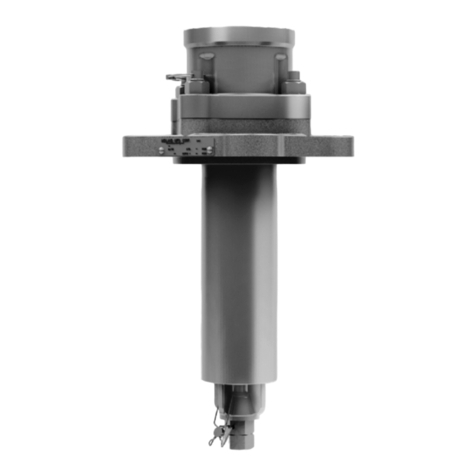
Midland
Midland A-1075 Installation, operation & maintenance manual
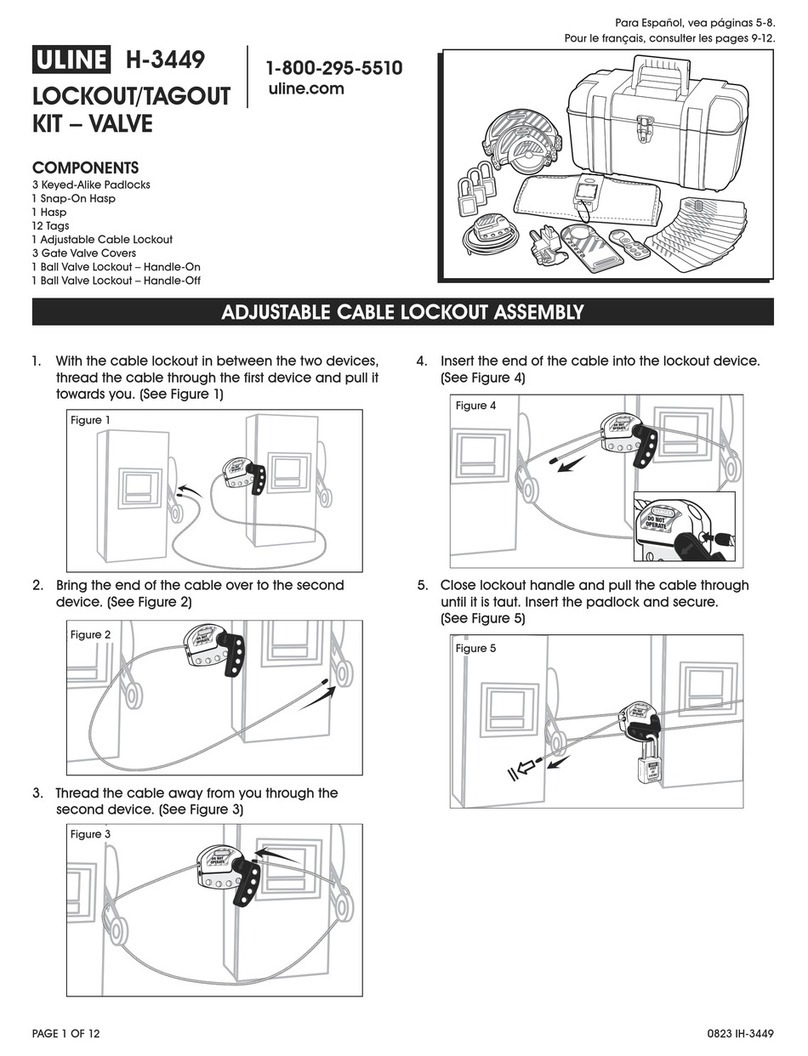
U-Line
U-Line H-3449 manual
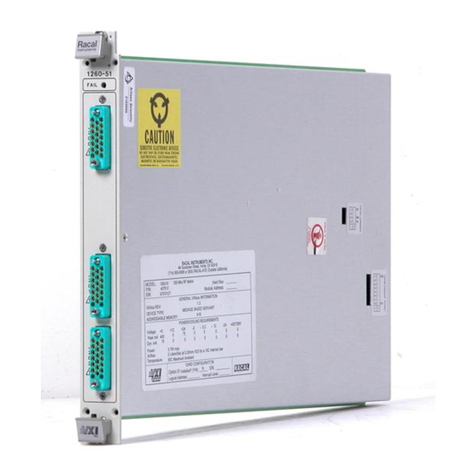
Racal Instruments
Racal Instruments 1260 manual

Pentair
Pentair BAA A390-D.03 Select operating instructions
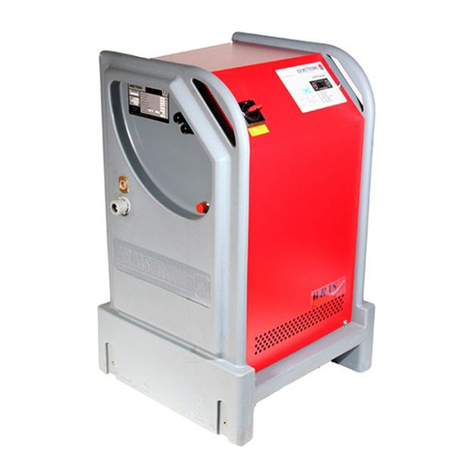
Armstrong
Armstrong 3750 Installation and operating instructions
